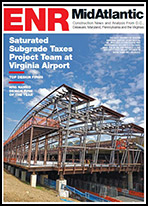
Before winter arrives, crews are working hard in the Northeast to assess and repair infrastructure damaged from tropical storms Irene and Lee in August and September, respectively.
Vermont was hit hard by Irene. The storm killed five, closed roads, bridges and rail lines, shut down the state office complex in Waterbury and left more than 50,000 people without power.
Dept. of Transportation officials in New York say Irene closed about 200 state-owned roads and bridges, and then Lee closed another 181 road segments and 37 bridges. As of Oct. 1, crews still were working to re-open seven bridges and 14 highway segments in the state system.
NYDOT officials also have conducted 1,680 assessments of non-state facilities. It is placing 11 temporary bridges to support local road systems.
Massachusetts and New Hampshire sustained less damage, although estimates are running into the tens of millions of dollars. Damage in Rhode Island and Connecticut was limited largely to downed branches and power lines.
Sue Allen, communications director for Vermont Gov. Peter Shumlin (D), says damage to state roads and bridges is expected to exceed $700 million. Two hundred communities were impacted, 40 seriously, she says. “Initially, 500 miles of state roads were closed,” says Allen. All but 20 miles are now re-opened, “but some open roads are dirt with only one lane.”
Irene closed 2,135 segments of Vermont local roads and 146 state highways. It damaged or closed 283 bridges and hundreds of culverts, mostly in the southern part of the state.
Richard Tetreault, the Vermont Agency of Transportation's chief engineer, says the state does not expect the Federal Highway Emergency Relief Fund or the Federal Emergency Management Agency to fully cover the cost of repairs. “That leaves the state or municipalities to pick up 20% to 25% of the cost, unless some act of Congress changes that,” he says.
Before considering a gas-tax increase, Gov. Shumlin says the state should wait to see how much the federal government will provide.
Tetreault says, for some projects, road and bridge reconstruction is being handled through emergency contracting mechanisms and maintenance rental agreements. “Some quick procurement may involve a site visit with three contractors for temporary bridges or small repairs,” he says. Bridge replacement will be managed through normal procurement processes.
The state of Vermont has retained consultants—including geotechnical, structural and highway engineers—from throughout New England and beyond. The state also has support from transportation agencies in Maine and New Hampshire; each sent state transportation agency workers to pitch in.


